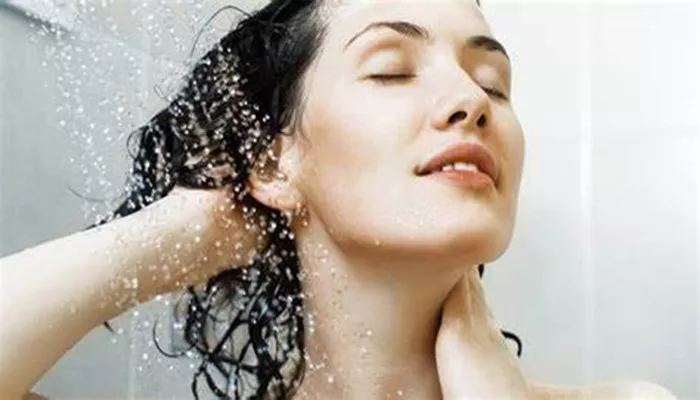Washing your hair every day can feel like a necessary chore, especially if you have an oily scalp or live in a humid climate. However, daily shampooing can strip your hair of its natural oils, leading to a vicious cycle of overproduction of sebum, dryness, and damage. The good news is that with the right approach, you can train your hair to require less frequent washing while keeping it healthy, fresh, and voluminous.
Understanding Why Hair Gets Oily
Before diving into solutions, it’s essential to understand why hair becomes greasy in the first place. The scalp produces sebum, a natural oil that keeps hair moisturized and protected. However, factors like genetics, hormones, diet, and even overwashing can cause the sebaceous glands to go into overdrive.
When you shampoo daily, you strip away these natural oils, signaling your scalp to produce even more sebum to compensate. This creates a dependency on frequent washing. Additionally, certain hair types—such as fine, straight hair—tend to show oiliness more quickly because the sebum travels down the hair shaft more easily than in curly or coarse textures.
Transitioning to Less Frequent Washes
The key to reducing hair washing frequency lies in a gradual transition. Going cold turkey from daily washing to once or twice a week can leave your hair feeling greasy and unmanageable at first. Instead, follow these steps to ease your scalp into a new routine:
Extend Time Between Washes Slowly
Start by pushing your washes back by an extra day. If you usually shampoo daily, try washing every other day for a few weeks. Once your scalp adjusts, extend it to every three days, then eventually to twice a week. This gives your sebaceous glands time to regulate oil production.
Use Dry Shampoo Strategically
Dry shampoo is a lifesaver during the transition phase. It absorbs excess oil and adds volume, making hair appear freshly washed. However, don’t rely on it too heavily—overuse can lead to product buildup and scalp irritation. Apply it at the roots before your hair gets excessively oily, rather than as a last resort.
Opt for Co-Washing or Gentle Cleansers
On non-shampoo days, consider co-washing (using conditioner only) or using a sulfate-free cleansing conditioner. These methods remove dirt and sweat without stripping natural oils. Look for lightweight formulas that won’t weigh hair down.
Choosing the Right Hair Care Products
The products you use play a significant role in how often you need to wash your hair. Harsh sulfates, silicones, and heavy conditioners can contribute to oiliness and buildup. Here’s what to look for:
Sulfate-Free Shampoos
Sulfates are detergents that create a rich lather but can be overly drying. Switching to a sulfate-free shampoo helps maintain the scalp’s natural moisture balance, reducing the need for frequent washing.
Clarifying Shampoos (Used Sparingly)
While sulfate-free shampoos are ideal for regular use, a clarifying shampoo can help remove stubborn buildup once every two weeks. Just don’t overdo it—these deep-cleansing formulas can be drying if used too often.
Lightweight Conditioners
Avoid heavy, creamy conditioners if you have fine or oily hair. Instead, opt for volumizing or balancing conditioners that hydrate without leaving residue. Apply conditioner mainly to the mid-lengths and ends, not the roots.
Adjusting Your Styling Routine
How you style your hair between washes can make a big difference in prolonging freshness.
Avoid Overbrushing
Brushing distributes natural oils from the scalp down the hair shaft. While this is beneficial for some hair types, overbrushing can make fine hair look greasy faster. Use a boar bristle brush sparingly to distribute oils evenly without overstimulating the scalp.
Heat Styling in Moderation
Excessive heat can trigger oil production as the scalp tries to compensate for dryness. If you use hot tools, apply a heat protectant and opt for lower temperatures. On non-wash days, refreshing styles like braids, buns, or loose waves can help disguise any oiliness.
Sleep on Silk or Satin
Cotton pillowcases absorb oils and create friction, leading to frizz and greasiness. Switching to a silk or satin pillowcase reduces moisture loss and helps hair stay fresher longer.
Diet and Lifestyle Factors
What you eat and how you manage stress can influence scalp health.
Stay Hydrated
Dehydration can lead to either an overly dry or an overly oily scalp. Drinking enough water helps regulate sebum production.
Balanced Nutrition
A diet rich in omega-3 fatty acids, vitamins A and E, and zinc supports healthy hair and scalp function. Foods like salmon, avocados, nuts, and leafy greens promote balanced oil production.
Manage Stress
Stress triggers cortisol production, which can increase sebum secretion. Practices like meditation, exercise, and adequate sleep help keep stress levels—and oiliness—in check.
Common Mistakes to Avoid
Even with the best intentions, some habits can sabotage your efforts to wash hair less frequently.
Overusing Styling Products
Heavy gels, waxes, and serums can accumulate on the scalp, requiring more frequent washing. If you use styling products, opt for water-based formulas and wash them out thoroughly.
Hot Water Washes
Hot water strips natural oils, prompting the scalp to produce more sebum. Rinse with lukewarm or cool water instead.
Touching Hair Too Much
Hands transfer dirt and oils to your hair, making it greasier faster. Try to avoid constantly touching or playing with your strands.
Conclusion
Breaking the daily hair-washing cycle takes patience and consistency, but the benefits are worth it. Healthier scalp, stronger hair, and less time spent on maintenance are just a few rewards. By adjusting your washing routine, choosing the right products, and adopting scalp-friendly habits, you can train your hair to stay fresh for longer.
Remember, everyone’s hair is different—experiment with these tips to find what works best for your unique texture and lifestyle. Over time, you’ll likely find that your hair not only looks better but also feels more balanced and manageable with fewer washes.
Related Topics:
- 8 Best Treatments for Alopecia in 2025
- 7 Best Mild Shampoos for Hair Fall
- 11 Effective Ways to Stop Side Hair Fall


